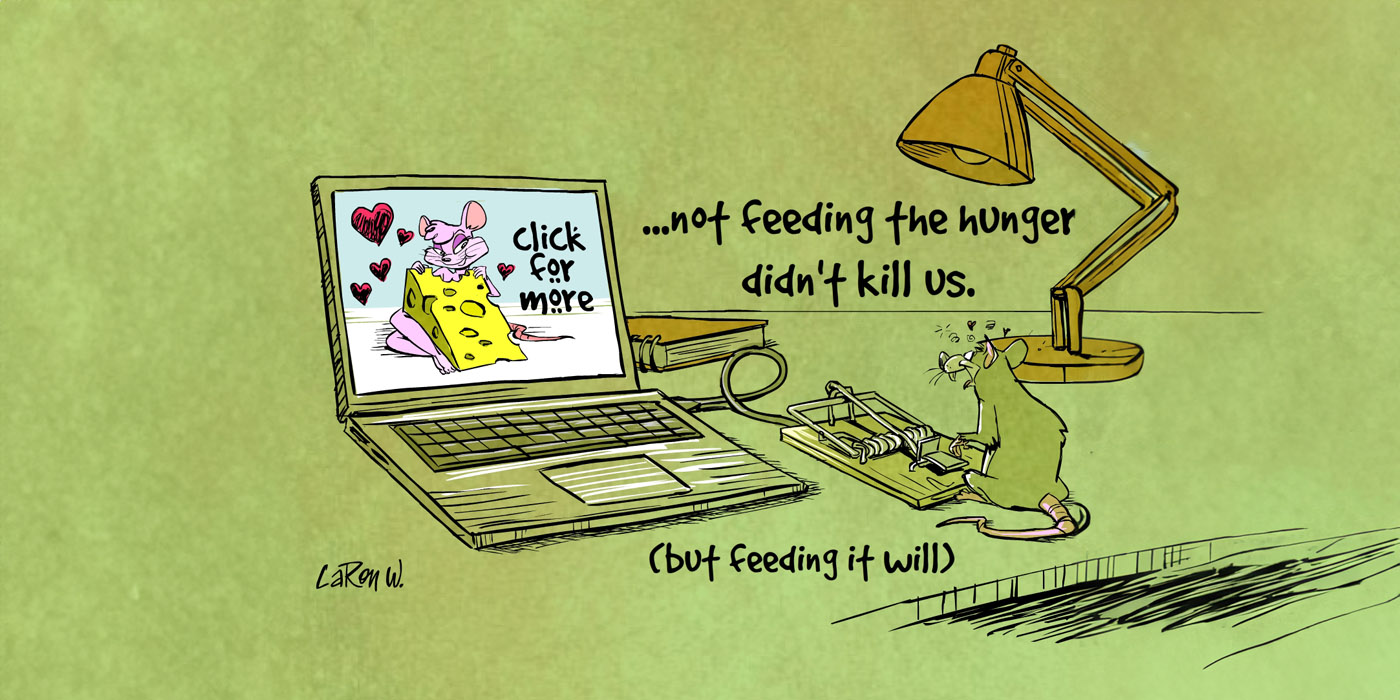Value of Abstinence to the Sexaholic
- To discover lust and its part in the relationship and to decouple lust from sex. Going into total sexual abstinence reveals the presence and nature of lust. Before, sex and lust were so intertwined we couldn’t see anything but the sex. Taking sex out of the picture reveals what’s really there. And it is this hidden component that must be seen and progressively overcome for true recovery.
- To discover how sex-addicted we really are. Plus, how can I say I’m truly powerless over sex addiction if I’ve never stopped having sex?
- To discover the extent of our emotional dependency and mis-connection with our spouse. Taking sex out of the relation reveals what’s really holding these two people together. It’s often a shock to realize how little else there is.
- Often, continuing sex in the relationship covers defects in the sexaholic they are otherwise unable to see, defects hindering recovery.
- Taking sex out of the picture “takes the pressure off” the relationship.
- To discover the Real Connection. Until our spiritual life-connection with another human is severed, both sexually and emotionally—the mis-connection—the real Connection cannot be made with the true Source of our lives. Abstinence removes one more road block that’s been keeping us from God.
- Promises a better marriage and opens the door to real love.
Value of Abstinence to the Partner
- Reveals their misconnection with us, emotional or spiritual. There must be such a misconnection; anyone married to a sexaholic has to be misconnected emotionally and spiritually. Reveals whether we have been their higher power. Reveals their relation to lust and sex. Reveals their possible sex or lust addiction.
- Reveals their attitude toward having sex with us. More often than not, spouses express great relief. Once in a while they express rage. Either of these is a very intense emotion, which in itself indicates the presence of something wrong that was being covered over by sex.
- Promises a better marriage and opens the door to real love.
Value of Abstinence to the Marriage
- Reveals what part sex has in the equation holding it together.
- Puts the marriage on a sounder basis.
- Makes greater intimacy possible if the couple can survive the initial transition through withdrawal. (Sound and thorough preparation is necessary before entering abstinence. See articles in Recovery Continues.) The necessity of having sex limits the depth of the intimacy that can be achieved. When sex is mandatory, intimacy cannot rise above a certain level. Couples typically discover that sex kept them from intimacy.
- Opens the way for a shared Real Connection. With the relation based on the spiritual, since the physical connection is desexualized and the emotional dependency connection is (hopefully) being healed, the two are in a position to go to God together as partners. The two can now admit to God that they are powerless over their marriage and ask him daily, together, to keep them sober for that day, one day at a time.
Plan of Action
- Prepare yourself spiritually beforehand. Read the articles in Recovery Continues. Write about it. Discuss it with your sponsor. Hold a check meeting [see “Check Meetings”] if necessary. Examine your motives for going into it. Are you ready to release sex? Share all this with others before announcing your intentions to your spouse to make sure you are okay with it.
- Discuss it with your spouse and outline your reasons. Emphasize that it is to make the union better. Listen to your spouse’s reactions. Understand what they are thinking and feeling. Care about their reactions and feelings. Be sure of your own motives—that you’re not doing this to escape the marriage, to punish or manipulate, or whatever.
- At times, members have decided to go ahead with abstinence even when the spouse objected. Ultimately, we are doing it not for them but for our own recovery, and without recovery there’s no marriage anyway. We turn our marriage—as we do our will and our lives—over to the care of God, one day at a time, and go ahead with it.
- Men should read the paper “The Physiological Aspects of Male Sexual Abstinence” if they are worried about physical consequences of sexual abstinence. (Available from the SA Central Office.) It is also helpful to talk with other men to hear their experience. In my second year-long abstinence I came across a technique that helped. I visualized shutting off the main water valve coming into the house. It takes several turns, and in my mind’s eye, I slowly and deliberately shut down that faucet. Face and talk about the fear involved.
- Start practicing the three C’s: Improve your non-sexual physical contact, communication and care with your partner. There’s usually little or none of this previously, another reason for going into abstinence. This is where we do what does not come naturally. We look at the person in the eyes. We smile. We say Thank You. We touch them on the arm, on the hand. We help them. We start the process of growing up. Do something nice without being found out. Do one difficult thing you would not normally do each day in your relation with that person.
- Abstinence should be open-ended. Setting time limits can be self-defeating, yet people often want to know how long abstinence should last. If you’re going to “try it for a month,” forget it. The body’s natural rhythms barely go through even one cycle in a month’s time. How can one expect to gain anything from abstinence without going through many such cycles? Also, adjusting to withdrawal both psychologically and in the home usually takes a month or so to even get started. And how can your marriage get better in just one month? How can you establish new directions and focus? You can’t even see what’s wrong with the relation in a month; more like a year to get the first inkling of what’s wrong! Also, if you’re concerned about time, it may indicate you’re not really surrendered to abstinence, counting days, etc. When people ask me how long it should be I reply, “Until you no longer have to have, expect, demand, or need sex.” In other words, until there is complete freedom from having to have sex. Also, after you have begun to see what’s wrong in your relations. We learn about abstinence by going into abstinence. “Practice makes perfect.”
- Find another of the same sex who is also going through abstinence in marriage, is contemplating it, and establish frequent sharing with that person. Helping another in abstinence will help you and provide the larger perspective to your own situation. “One drunk talking with another.”
- Share your continuing experience in your group.
Anonymous






